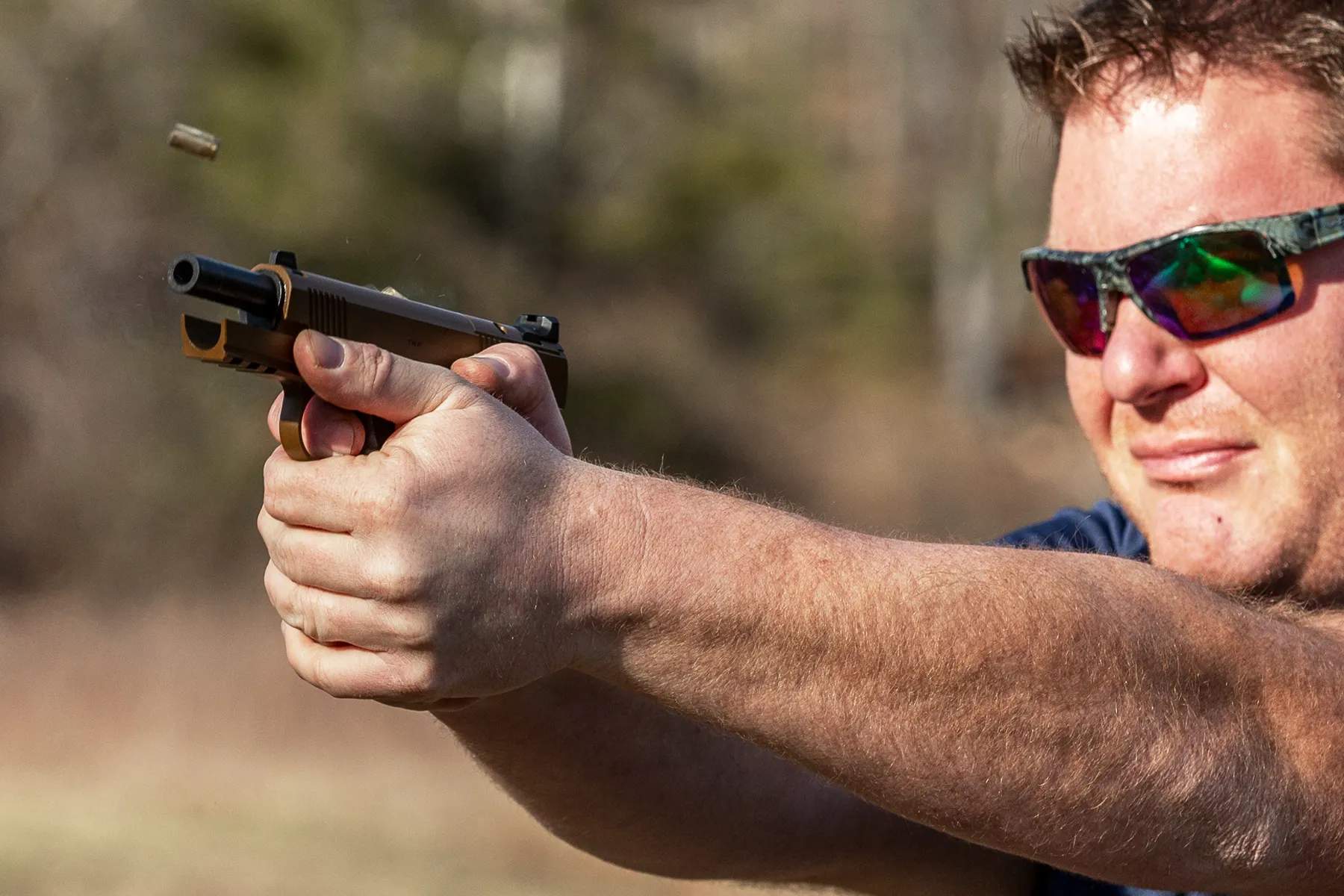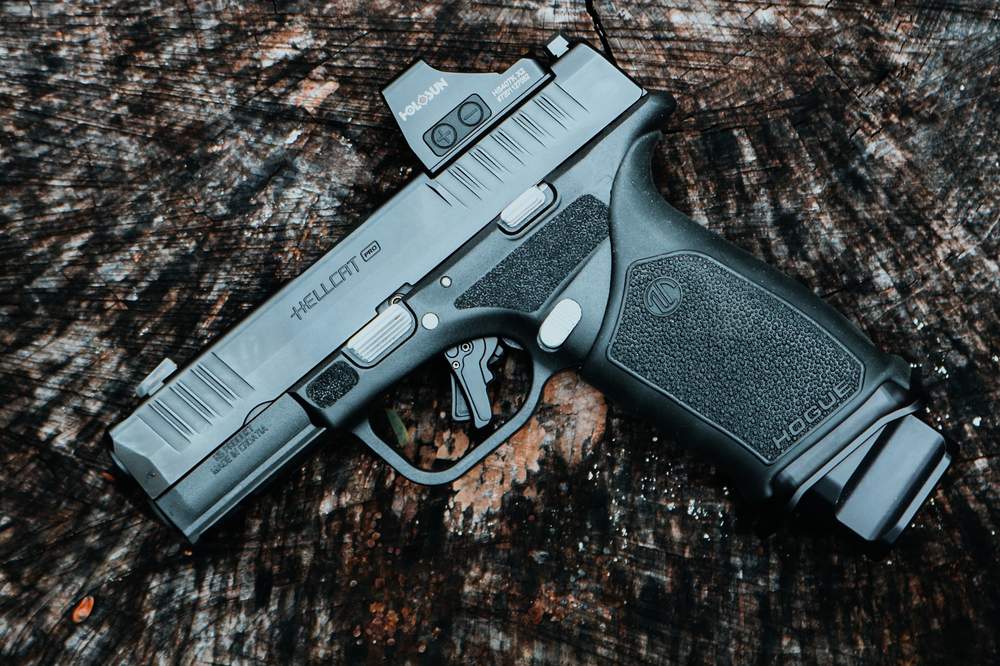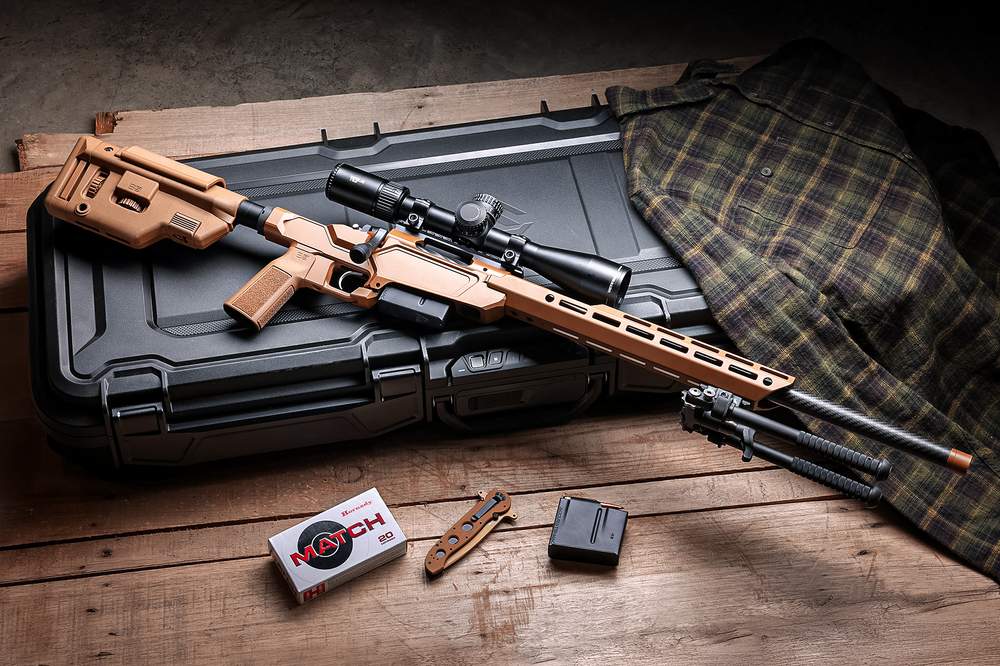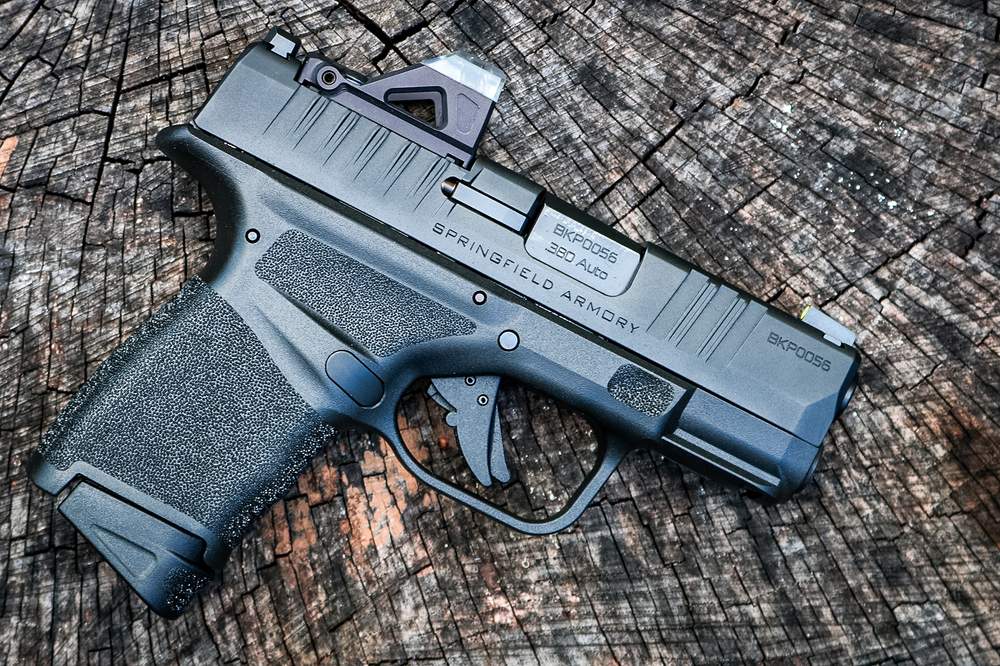Click to listen to the audio version of this article.
Springfield Armory Adds New Dimensions To Its Iconic TRP Line With a 9mm Model & The Agency Optic System
The 1911 semi-automatic pistol design created by John M. Browning is now almost 115 years old and, amazingly enough, it’s still going strong. Springfield Armory has long been a champion of the 1911 platform and has continued to improve and innovate to help keep it not only relevant but still very popular. The company’s efforts are reflected in the most recent iterations of its 1911 TRP pistol lineup featuring the integration of a new optic-plate system — and with the release of the first TRP model chambered in 9mm.
A Little Springfield TRP History
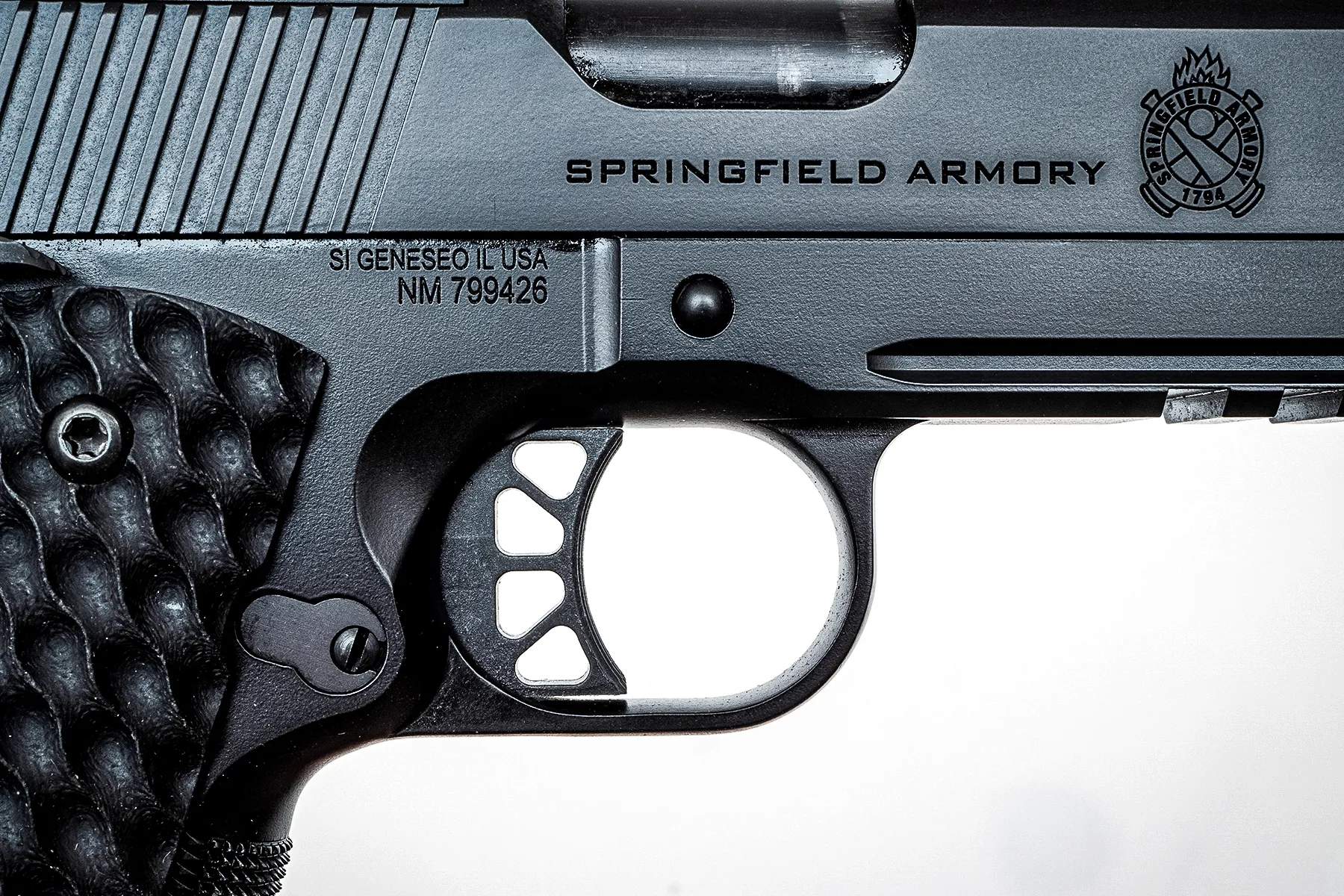
Back in the mid-1990s, the FBI was looking for a new .45 ACP pistol for its elite Hostage Rescue Team. The specifications and requirements were very demanding, and while several manufacturers submitted handguns for review, it was Springfield Armory that landed the contract with the company’s 1911 Professional model.
The Professional was an iconic 1911 pistol that had many admirers due to its suite of tough-as-nails features and its promise of superb accuracy and reliability. However, because of the amount of custom work involved with hand-fitting parts during the build process, the Professional was fairly expensive and out of reach for the average gun buyer.
To help bridge that divide, Springfield introduced the Tactical Response Pistol, or the TRP. The TRP was built to offer many of the high-end features and aesthetics of the Professional model without involving as much custom hand-fitting of the parts. This resulted in a tricked-out .45 ACP 1911 that had a bevy of sweet features offered at a lower, far more accessible, price point.
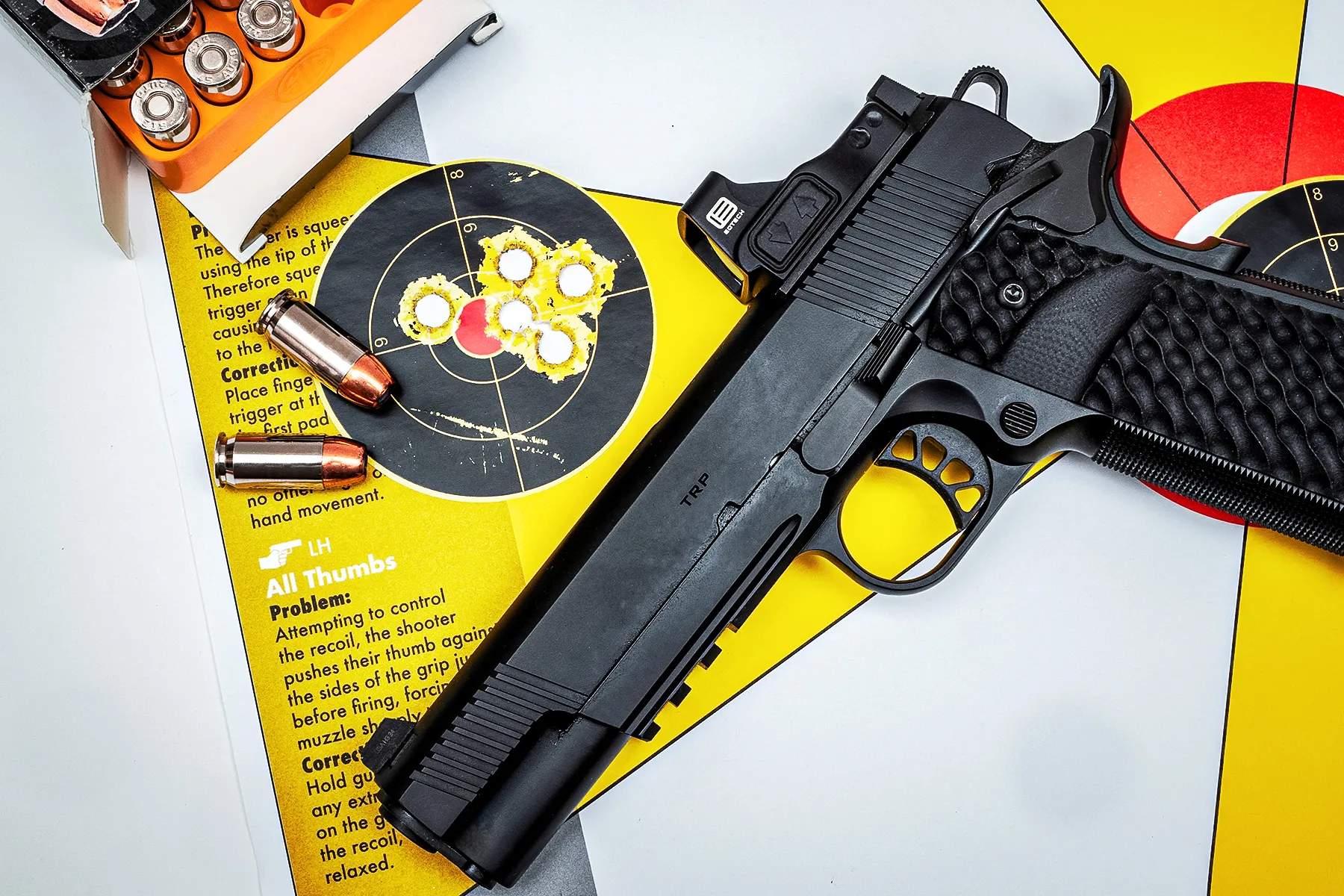
Last year, Springfield Armory introduced the TRP Carry Contour, which took the design philosophy and goals of the standard TRP and condensed everything into a more compact and carriable form factor. With a shorter barrel, an aluminum frame, and a beveled heel, the Carry Contour frame allowed users to opt for the upgraded features of a TRP in a package specifically designed for concealed carry. Of course, being a 1911 TRP, it was only chambered in .45 ACP, until now.
Enter the TRP Carry Contour 9mm
A 1911 in 9mm is nothing new, but the latest Carry Contour model and the new full-size TRP AOS represent the first time Springfield Armory has offered the 9mm chambering in its TRP lineup. Other than its new chambering, the latest Carry Contour is essentially identical to the one released last year. It features a Commander-length, 4.25-inch barrel that is manufactured with the company’s hammer-forging process. The model I tested is wrapped in a very appealing coyote-brown Cerakote finish, but it’s also available in black.
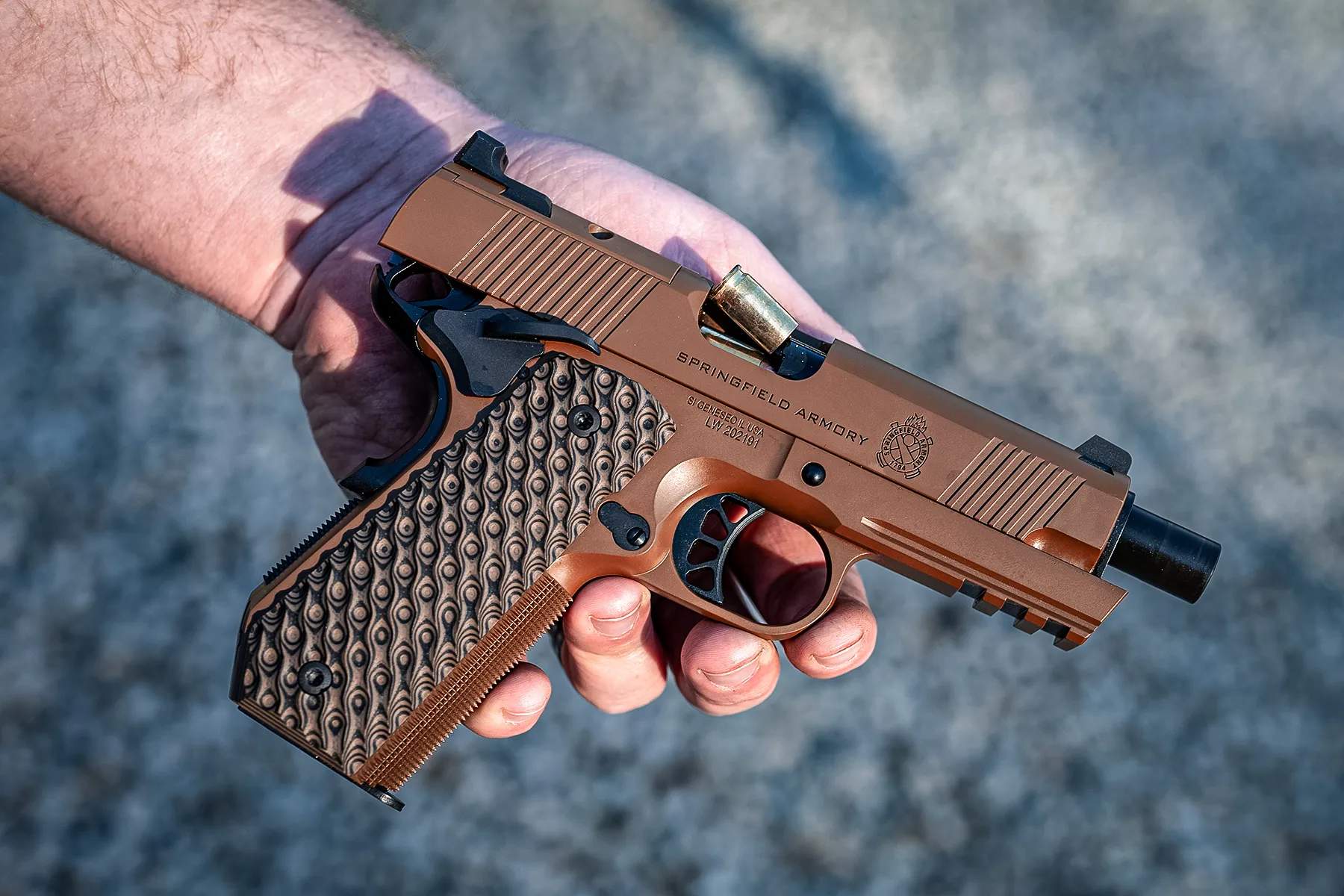
What makes the Carry Contour model more suited for concealed carry, aside from the more compact size, is the integration of an aluminum-alloy frame instead of steel. The lighter frame shaves a decent bit of weight off the pistol — the new TRP weighs about 27 ounces, much better for all-day carry.
The heel of the frame is beveled and rounded off, so to speak, to minimize printing under a concealing garment. The trade-off for the beveled heel is that the Carry Contour version does not have a flared magazine well like the standard model does.
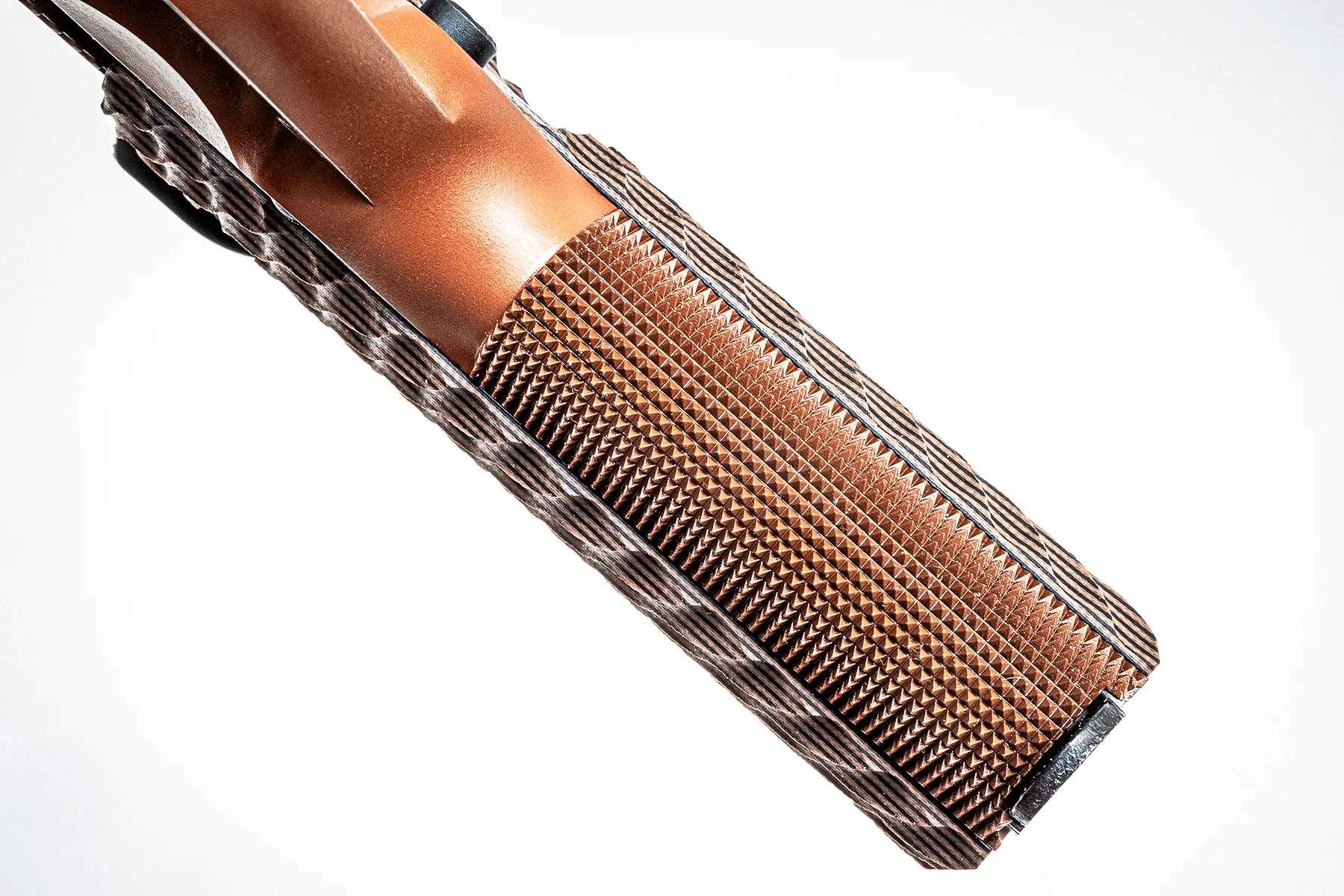
Other than that, and a shorter, commander-length guide rod, the rest of the features on the Carry Contour are pretty much the same as a standard TRP, including the same attention to detail such as 20-lines-per-inch checkering on the front strap and back strap, serrations atop the slide to mitigate glare, and Springfield’s Gen2 speed trigger. The Carry Contour still includes the TRP’s skeletonized hammer and a Picatinny rail for your favorite accessory and, like all other TRPs, the slide is forged for additional strength and to provide a lifetime of service.
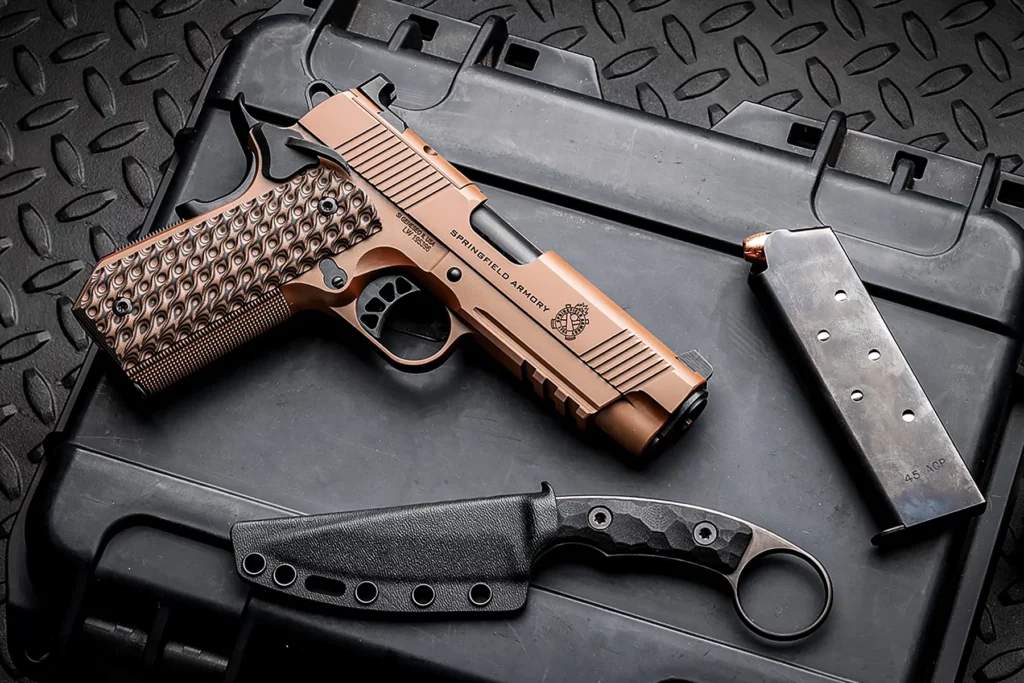
Like other recent additions to the TRP lineup, the Carry Contour model includes Hydra G10 grip panels from VZ Grips that provide plenty of texture for recoil control, though we’ll talk about that a bit later. Naturally, in TRP fashion, the Carry Contour showcases a prominent memory bump on the grip safety for positive activation and it includes an ambidextrous thumb safety to keep left-handed shooters happy. But even with all of that, there’s more exciting news for the TRP aficionado.
Optics: The AOS Factor
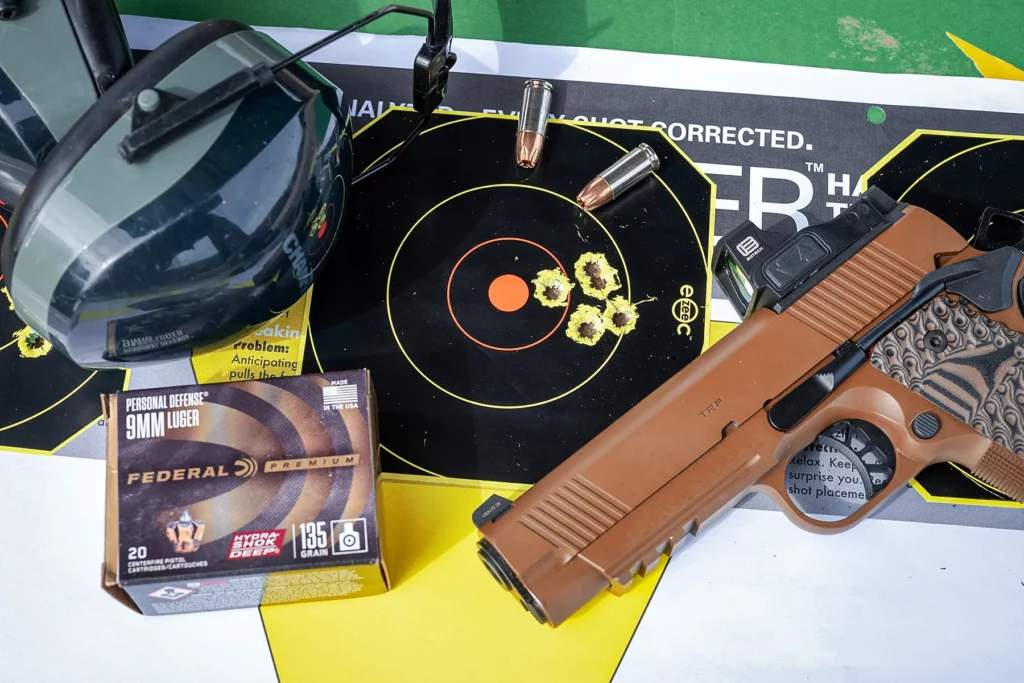
Aside from the Carry Contour model, I also tested a full-size TRP AOS chambered in .45 ACP (the full-size TRP AOS is also available in 9mm). Both pistols included the new AOS optic-mounting solution vis-a-vis mounting plates from Agency Optic System. This new system allows the user to mount their favorite optic using a variety of available adapter plates that can be purchased from Springfield Armory.
The caveat is that the TRP pistols don’t ship with an adapter plate — your specific plate must be ordered from the company after you purchase the pistol. However, Springfield includes a special discount coupon that lets the user save a bit of money at the beginning. For their first order, the user can purchase an adapter plate for $40 instead of the normal $129 dollars.
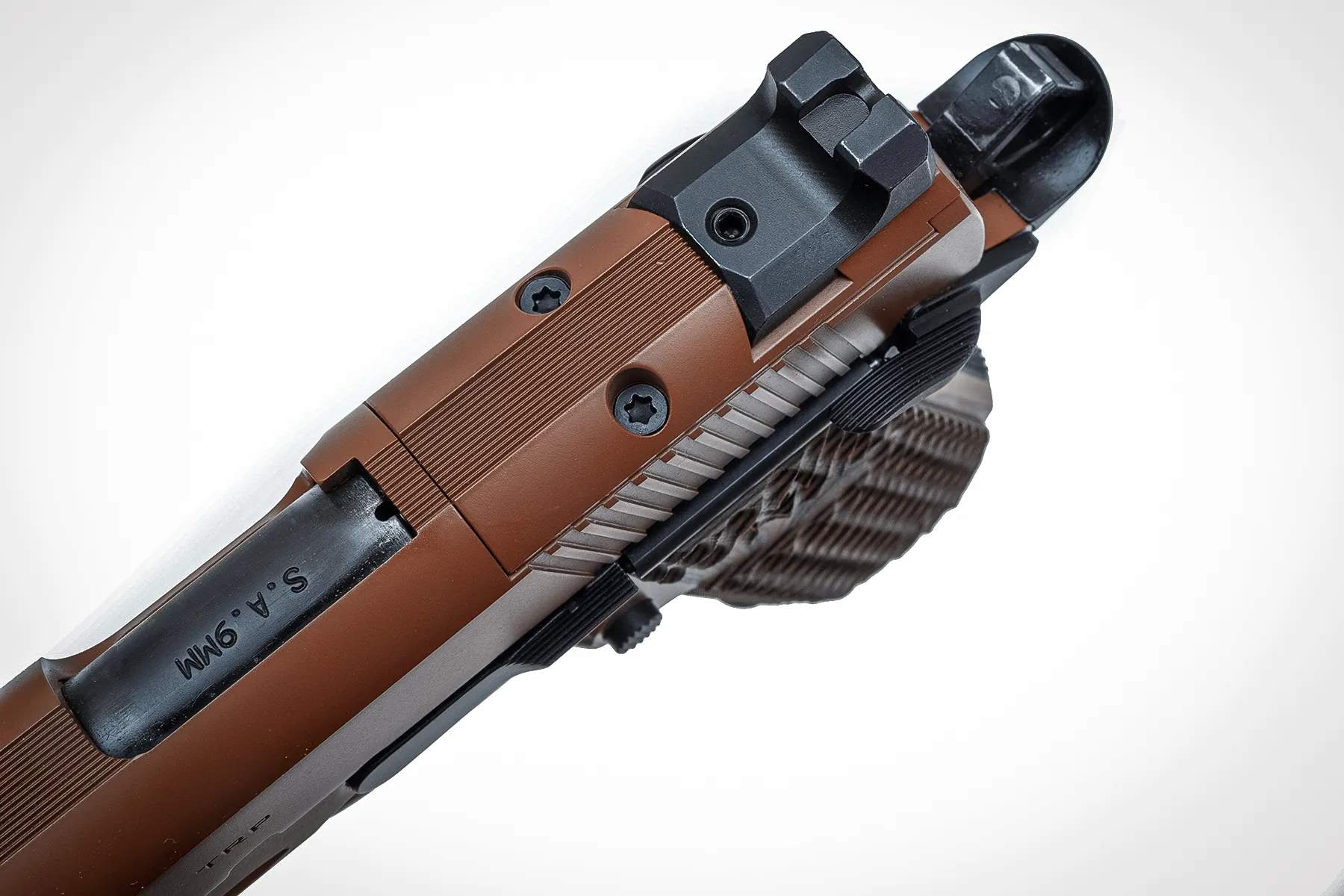
That standard price seemed a little expensive until I looked at the cover plate on the pistol. When the cover plate is removed from the TRP AOS, the integrated rear sight comes off as well. The adapter plate you order from Springfield will come with its own suppressor-height rear sight attached, so that’s going to be part of the expense of each adapter plate. I suppose it’s a reasonable enough workaround for the rear sight issue.
This explains another difference I found between the TRP AOS and other recent TRP models. The .45 ACP Carry Contour model that I reviewed previously had a 3-Tritium-Dot, tactical-rack sight package. The TRP AOS pistols I had for this review had a blacked-out and serrated rear sight with no tritium inserts. This is probably because putting tritium inserts into the sights that are attached to every single adapter plate for sale would be prohibitively expensive both for the customer and for Springfield. The more cost-efficient way would be just to have blacked-out rear sights on the plates instead.
The EOTech EFLX Mini RDS
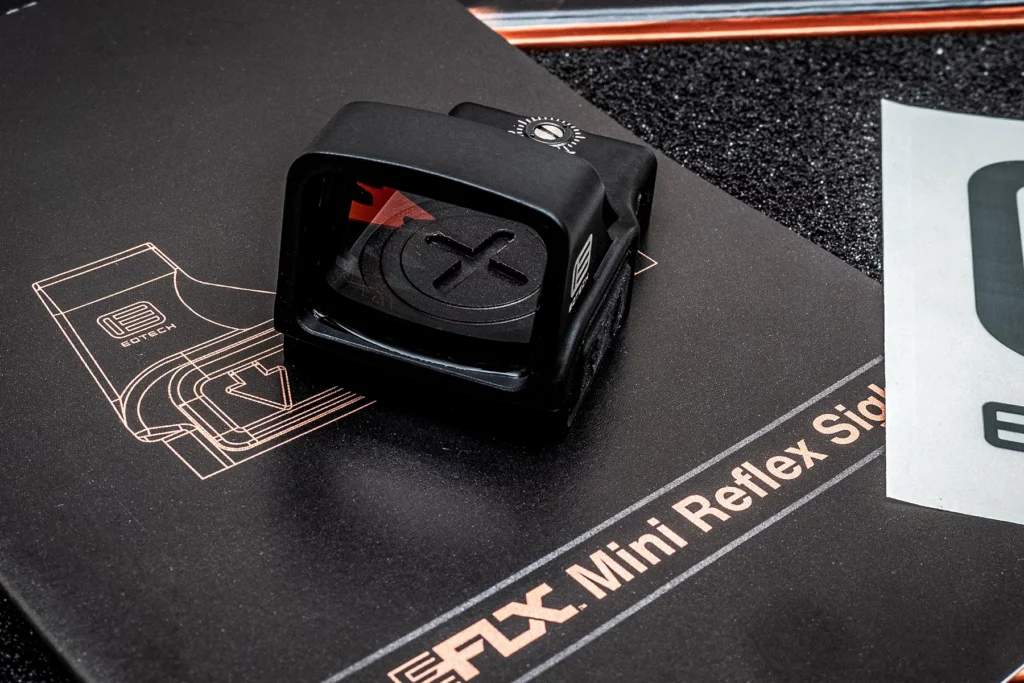
I decided to try out the EOTech EFLX Mini RDS. I hadn’t used it before, but I’d heard great things about it, and since the sight uses the DeltaPoint Pro footprint, Springfield had an adapter plate available. Mounting the EFLX was simple enough, just about like any other RDS, and it was affixed to the full-size TRP AOS in a few minutes. I’m partial to .45 ACP, so I started off with that pistol first, then I moved the EFLX over to the 9mm Carry Contour model for a different range trip.
The EFLX Mini RDS offers a fairly wide-open field of view with glass that provides excellent clarity. The housing is constructed from aluminum so it can stand up to some knocks and bangs. One nice feature of the EFLX is the top-load battery compartment that makes battery (2032) replacement a snap and lets you do it without upsetting the zero for your favorite load.
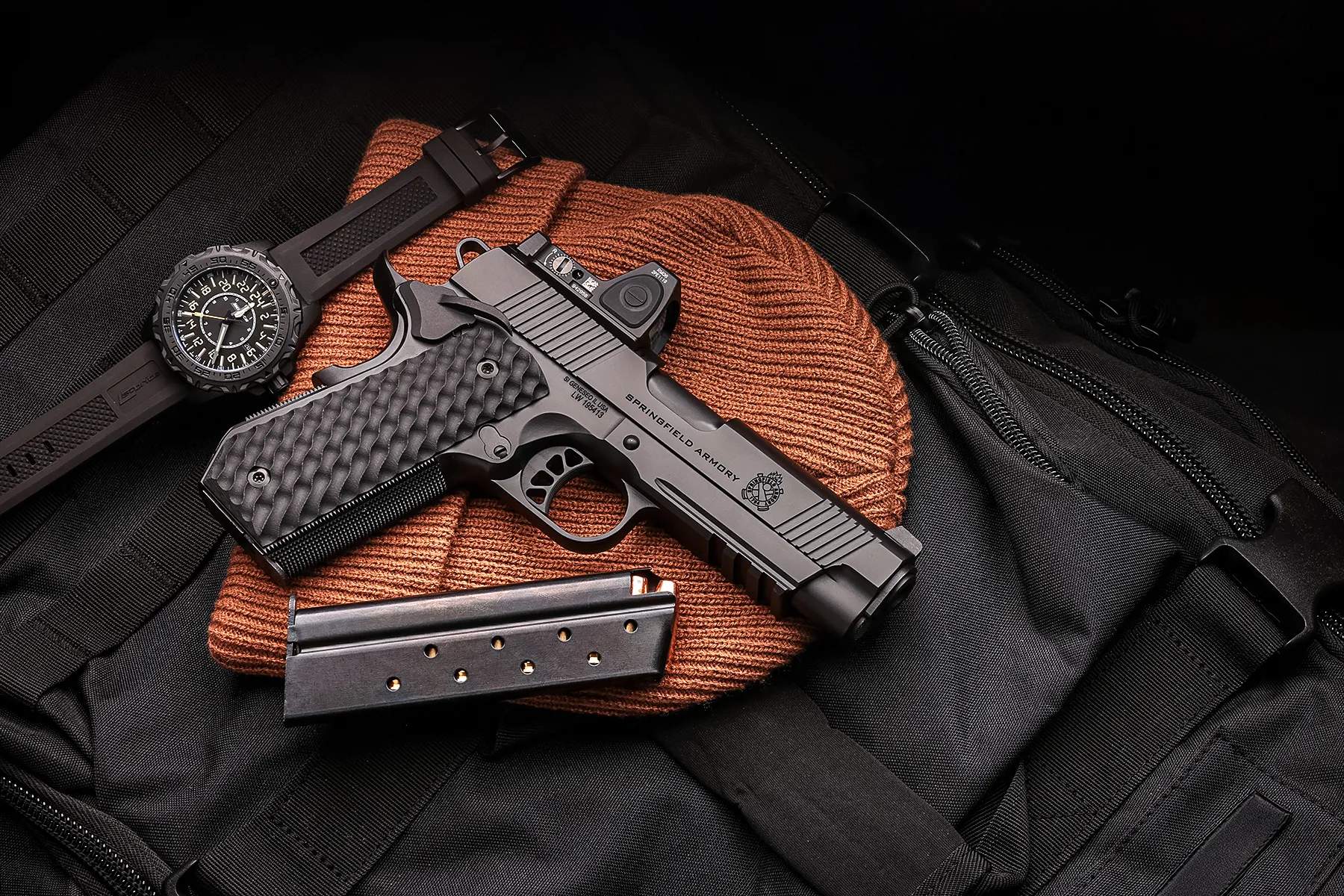
There are eight daylight brightness settings (and 1 night setting) and the EFLX will yield between 20K and 25K hours of battery life at a level-5 setting — that’s between two to three years before you have to swap out batteries. Speaking of making adjustments, the EFLX offers the ability to adjust both elevation and windage at 1-MOA per click to get your load dialed in just right.
The EFLX Mini RDS comes with just about everything you need to start with including a battery, mounting screws, a Torx wrench and a multi-adjustment tool. EOTech throws in a 10-year warranty with this robustly built optic, and the best part is that it has a very reasonable MSRP of just $389.
Range Time
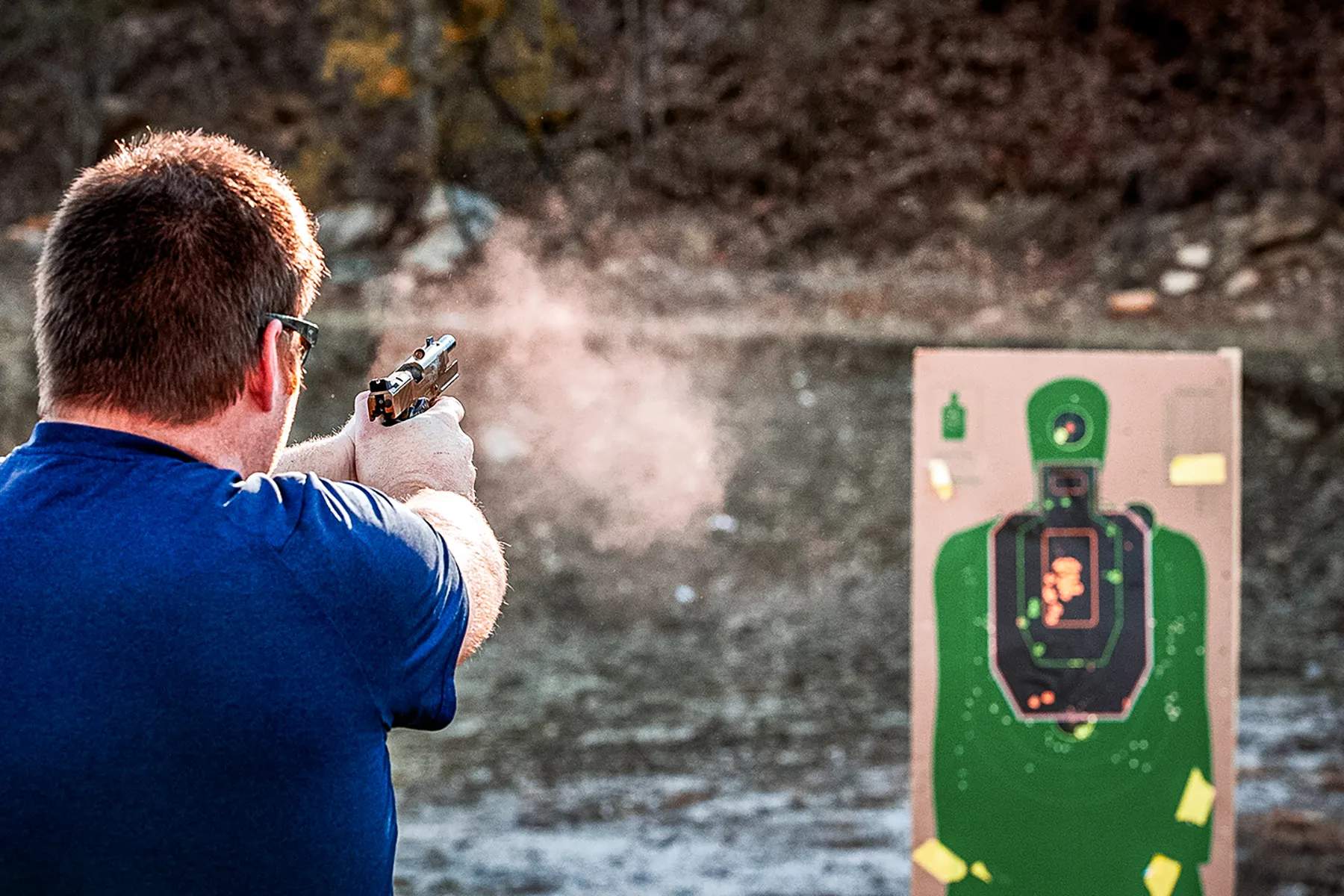
On my first range trip, I took one of my friends, Lincoln, out with me to try out the new pistols. I had the EFLX Mini on the full-size .45 ACP model and we shot the 9mm Carry Contour sans optic during that first session. I had the EFLX on the Carry Contour model during a second range session, so the results I got during the accuracy portions of the testing were with the EFLX Mini RDS mounted on each pistol at different times.
Despite some serious sun glare in the optic’s window making it tricky to see out to 25 yards on the range, the full-size model turned in some very respectable groups and a few truly excellent ones as well.
The average group size for all the five-shot groups I put on paper was right at 2.27 inches, with groups ranging from 1.25 inches all the way up to 3.35 inches.
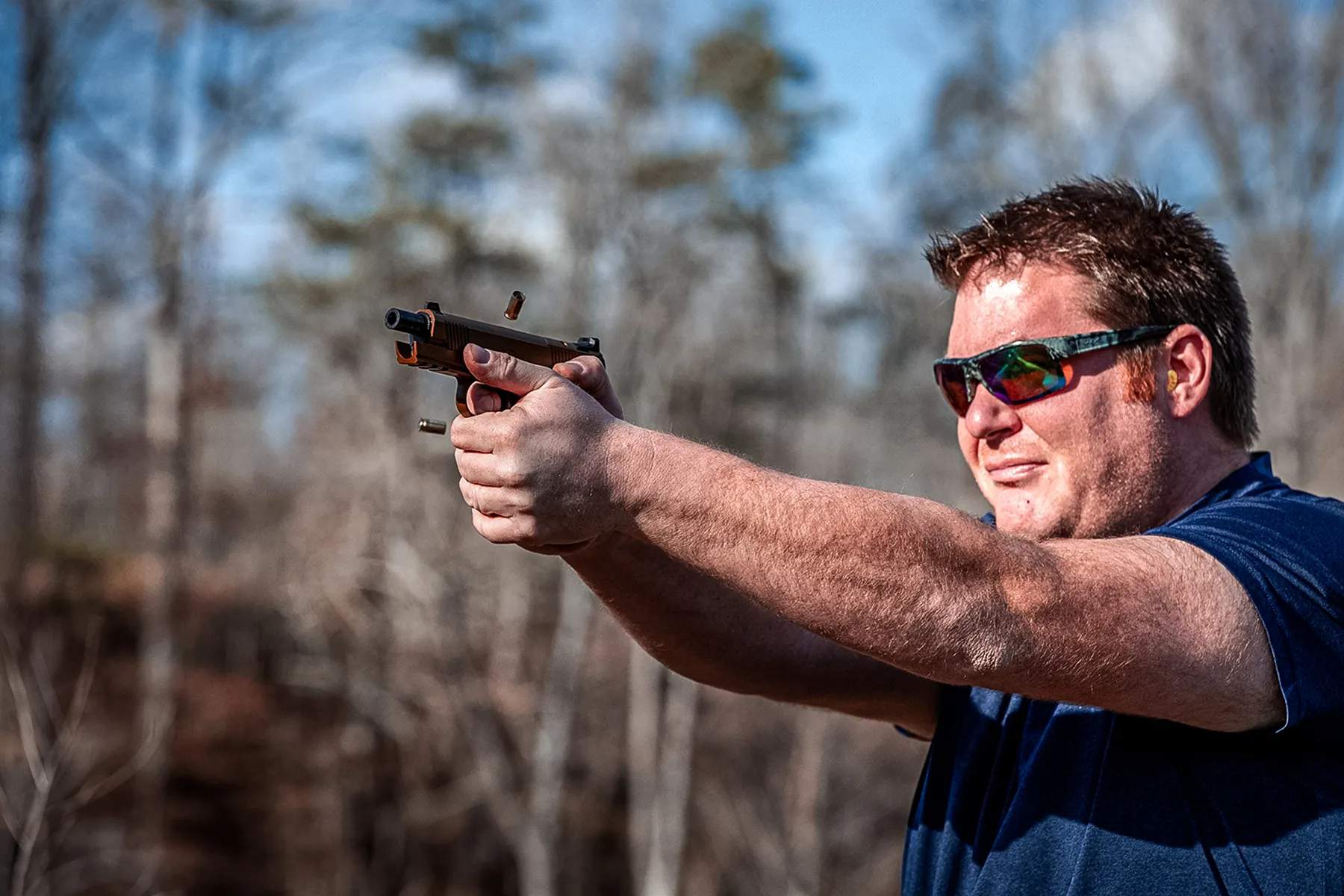
I got a nice 1.5-inch group with Hornady’s 230-grain +P Critical Duty load. SIG Sauer took the blue ribbon with its 230-grain Elite V-Crown load, producing a tight 1.25-inch group. To be honest, the groups' sizes had such a large range because of the shooter, not the pistol or ammo.
Considering its shorter barrel, I tested the 9mm Carry Contour’s accuracy at just 15 yards. It performed extremely well with all three loads I tested, producing an average group size of 1.24 inches. Remington’s 147-grain Golden Saber Bonded load shot a best group of 0.94 inches, while Federal’s 135-grain Hydra-Shok Deep load took the prize with a best group of 0.88 inches. That said, the Golden Saber delivered the most consistently accurate results with a three-group average of 1.03 inches versus 1.14 inches for the Hydra-Shok Deep.
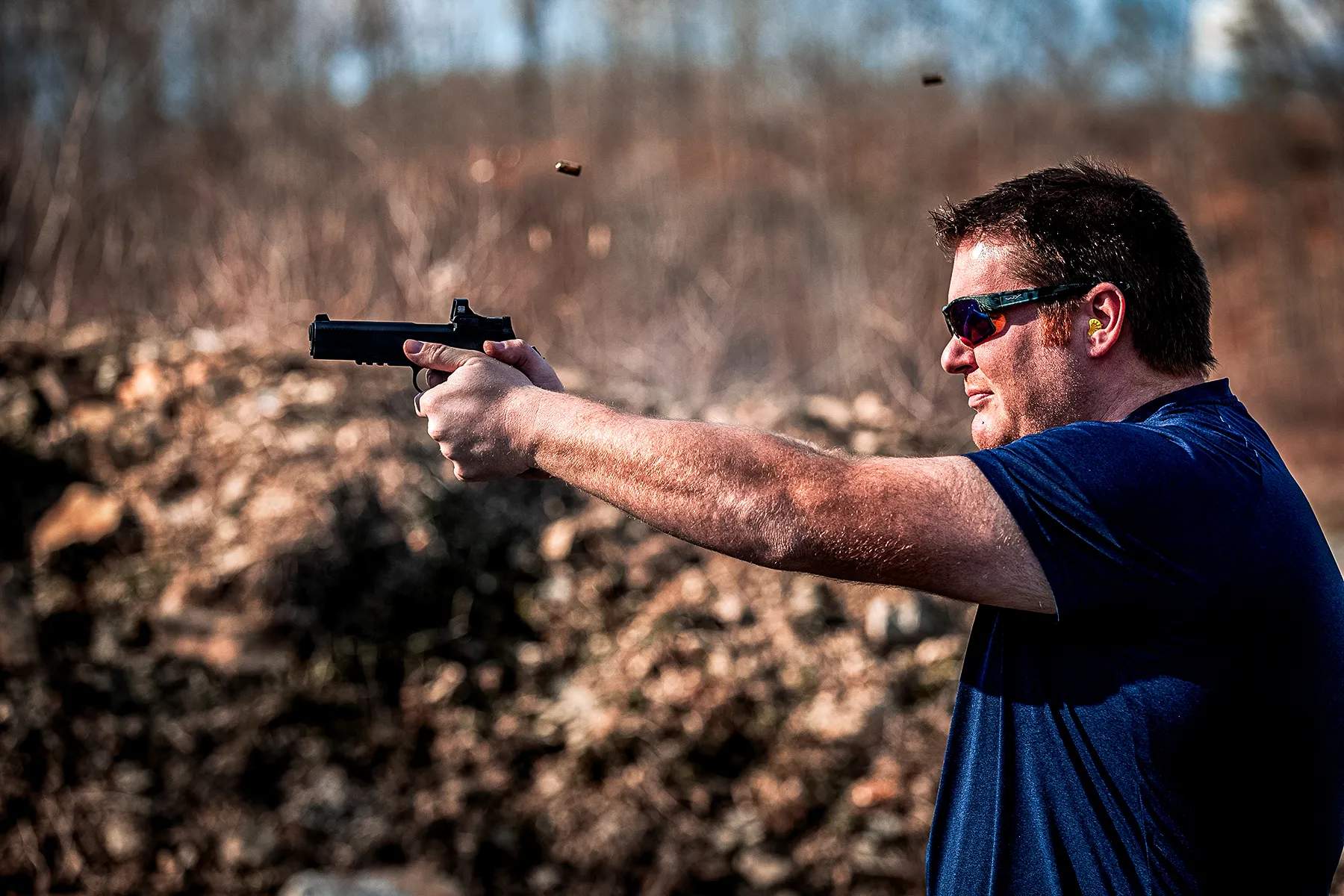
As for the shooting experience itself, I really enjoyed shooting both pistols — for the most part. Controls like the ambi thumb safety were nicely positioned, sized well, and offered a nice, tactile pop on engagement; there was no mush to be found. Similarly, the triggers on both pistols performed well with minimal overtravel after a fairly crisp break. The full-size model’s trigger broke at an average of 4.6 pounds while the Carry Contour’s trigger had a break weight of 4.75 pounds. For me, that’s a bit heavy for higher-ticket 1911s, but not intolerable, especially since most folks aren’t going to want a hair trigger on a carry gun.
The one aspect of the shooting experience I did not enjoy was the Hydra G10 grips. They certainly provide a lot of “texture” with lots of traction for recoil control, but they quickly got uncomfortable on the full-size .45 ACP version. Even with the heft of the steel frame tamping down recoil a bit, the edges of the texturing started to gnaw on my thumb in short order. It was even more pronounced with +P loads.
However, the grips were fine on the 9mm Carry Contour, since the recoil was a good bit less than .45 ACP, but they never actually felt comfortable. The Hydra G10 grips are great if all you’re doing is carrying and just need that extra texture for when it’s time to throw down, but I like to shoot my guns regularly and I need the grips to be comfortable to do that. But it’s an easy fix to swap out grip panels and still get all the great benefits of the TRP AOS package.
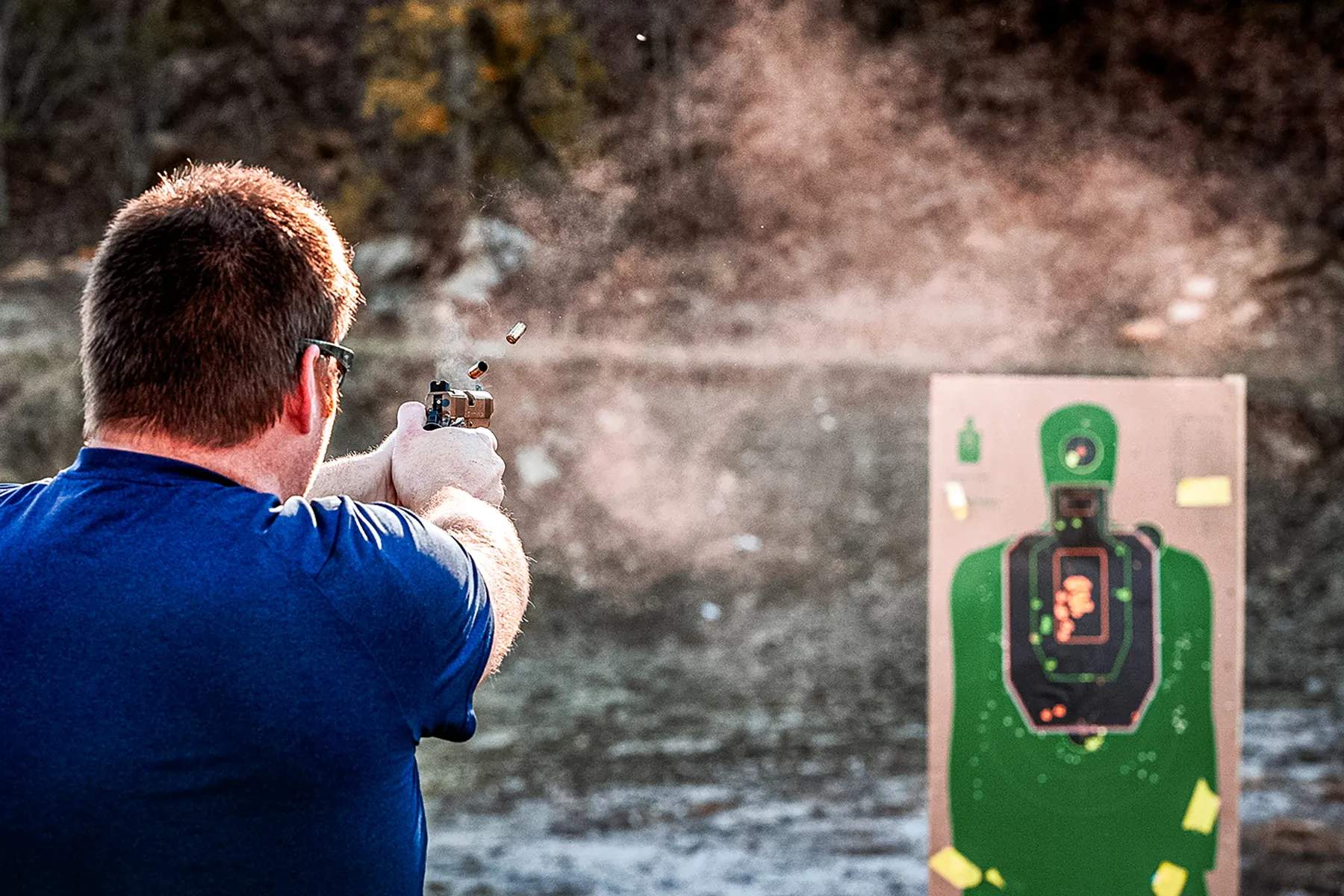
As for the reliability of the two pistols, everything ran almost perfectly. Between general target shooting, running drills, and the accuracy testing, we ran about 400 rounds of a variety of loads and bullet types through each pistol. The only malfunction I encountered was a failure to eject with the Carry Contour and Hornady’s 115-grain Flex-Tip Critical Defense load. It was hard to tell what the exact problem was since it didn’t occur again.
Tightly built 1911s are known to be a little finicky, but it could have just been a one-off with that particular round or the pistol simply going through its break-in period. Every other round fired through both pistols fired and fed flawlessly. It’s just a matter of finding what load your pistol prefers after a good bit of testing and making sure the load fits your parameters for downrange performance.
Final Thoughts
The new AOS optic-mounting solution brings a new depth to the TRP series and helps keep the upscale 1911 platform relevant in these modern times. For someone like me with aging eyes, the ability to add a quality optic like the EOTech EFLX to a premium 1911 like the TRP certainly makes it much easier to stay on target at distance.
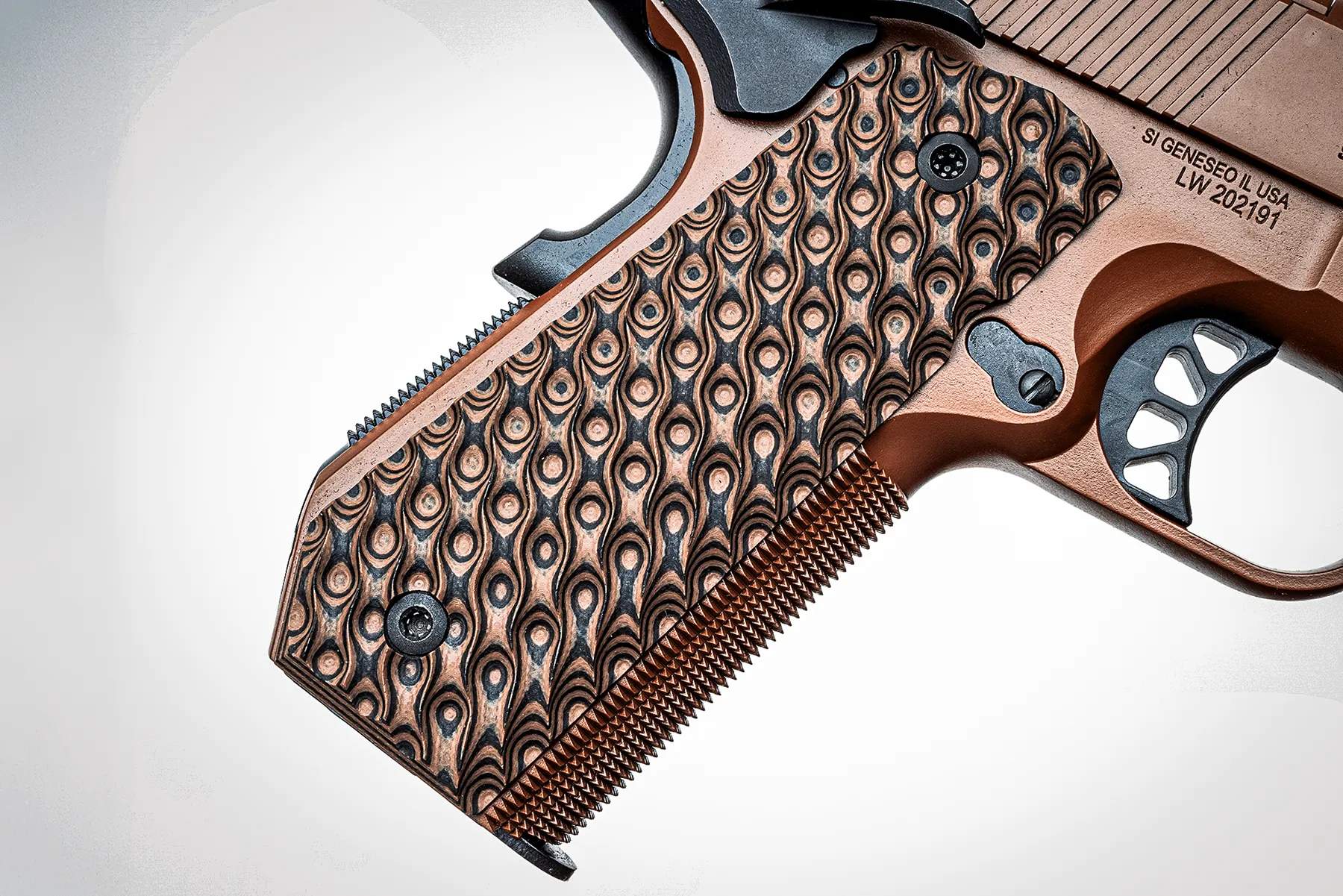
The biggest advancement with these new offerings is definitely the 9mm chambering. With the advent of modern bullet design, the 9mm is an extremely capable round these days. I personally would rather go with the big-bore option if we’re talking about a single-stack magazine, but 9mm does have its one big advantage over .45 ACP: reduced recoil.
The new 9mm option allows folks who might be a little recoil-sensitive to still have access to all the features and benefits of the TRP system without having to deal with the extra thump that comes with a .45 ACP. We can sit around the gun shop and debate which caliber is better all day long, but luckily, Springfield Armory now offers both options and everyone should be happy.
The new 1911 TRP AOS pistols in both 9mm and .45 ACP are a fantastic gateway into the world of high-end, even custom 1911s. They are exceptionally attractive pistols with all the features you could want in a sleek and ultra-clean presentation. They aren’t budget pistols with an MSRP of $1,999, but for what you get, there’s a lot of value. Whether you’re a 9mm fan or steadfast in your faith in God’s chosen caliber of .45 ACP, Springfield Armory has you covered and should definitely be at the top of your list for consideration.

For more information, visit springfield-armory.com.
New Springfield TRP 1911 Specifications:
1911 TRP AOS Full-Size
-Action: Semi-Automatic
-Barrel: 5 inches
-Overall Length: 8.6 inches
-Caliber: .45 ACP
-Capacity: 8+1
-Finish: Nitride
-Weight: 39.2 ounces
-Sights: Tritium Front, Serrated Rear
-Optic Ready: Yes (Agency Optic System)
-Grips: VZ Grips Hydra G10
-MSRP: $1,999
1911 TRP AOS 9mm Carry Contour
-Action: Semi-Automatic
-Barrel: 4.25 inches
-Overall Length: 7.15 inches
-Caliber: 9mm
-Capacity: 9+1
-Finish: Cerakote
-Weight: 27.3 ounces
-Sights: Tritium Front, Serrated Rear
-Optic Ready: Yes (Agency Optic System)
-Grips: VZ Grips Hydra G10
-MSRP: $1,999
Range Test Results
Springfield TRP AOS .45 ACP Full-Size w/EOTech EFLX
Accuracy (25 yards)
| Ammo | Average | Best |
|---|---|---|
| Federal 230-grain Punch | 2.88” | 2.44” |
| Hornady 230-grain +P Critical Duty | 2.17” | 1.5” |
| SIG Sauer 230-grain Elite V-Crown | 1.76” | 1.25” |
Springfield TRP AOS Carry Contour 9mm w/EOTech EFLX
Accuracy (15 yards)
| Ammo | Average | Best |
|---|---|---|
| Federal 135-grain Hydra-Shok Deep | 1.14” | 0.88” |
| Hornady 115-grain Critical Defense | 1.55” | 1.19” |
| Remington 147-grain Golden Saber Bonded | 1.03” | 0.94” |
